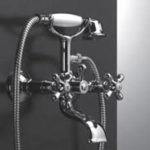It’s the first step in setting up your business’s accounting system. The chart of accounts clearly separates your earnings, expenditures, assets, and liabilities to give an accurate overview of your business’s financial performance. The COA is typically set up to display information in the order that it appears in financial statements. That means that balance sheet accounts are listed first and are followed by accounts in the income statement. Companies use a COA to organize their finances and give interested parties, such as investors and shareholders, a clear view and understanding of their financial health.
In accounting, each transaction you record is categorized according to its account and subaccount to help keep your books organized. These accounts and subaccounts are located in the COA, along with their balances. COAs are typically made up of five main accounts, with each having multiple subaccounts. Most QuickBooks Online plans, for example, support up to 250 accounts. The average small business shouldn’t have to exceed this limit if its accounts are set up efficiently.
- Size – Set up your chart to have enough accounts to record transactions properly, but don’t go over board.
- Setting up a chart of accounts can provide a helpful tool that enables a company’s management to easily record transactions, prepare financial statements, and review revenues and expenses in detail.
- You can customize the chart of accounts through various actions, such as adding next accounts, marking old accounts inactive or editing account numbers.
- Accounting software products generally set you up with a basic chart of accounts that you can work with your accountant or bookkeeper to amend, according to your industry and your business’s complexity.
- Users can approve and/or view financial transactions based on the ChartField(s) to which they have access.
- It is a very important financial tool that organizes a lot of financial transactions in a way that is easy to access.
The chart of accounts should give anyone who is looking at it a rough idea of the nature of your business by listing all the accounts involved in your company’s day-to-day operations. Read on to learn about the importance of a chart of accounts and how to create one to keep track of your business’s accounts. If you don’t leave gaps in between each number, you won’t be able to add new accounts in the right order.
Use a basic structure that is aligned to the business’s financial reporting needs
Although most accounting software packages like Quickbooks come with a standard or default list of accounts, bookkeepers can set up and customize their account structure to fit their business and industry. The table below reflects how a COA typically orders these main account types. It also includes account type definitions along with examples of the types of transactions or subaccounts each may include. Revenue accounts capture and record the incomes that the business earns from selling its products and services.
A chart of accounts gives you a clear picture of how much money you owe in terms of short- and long-term debts. Your COA can help you determine how much of your monthly income you can afford to put toward your debts and help you develop longer-term debt repayment plans. This content is for information purposes only and should not be considered legal, accounting, or tax advice, or a substitute for obtaining such advice specific to your business. No assurance is given that the information is comprehensive in its coverage or that it is suitable in dealing with a customer’s particular situation. Intuit Inc. does not have any responsibility for updating or revising any information presented herein.
Why Is a Chart of Accounts Important?
Expenses are all the non-debt money you need to spend to keep your business running. CoA replaces the filing cabinets of yore, where back offices had intricate paper indexing systems for their transactions. So if you’re looking to make sure you’re following all the best practices for your CoA, you’re in the right place. See why the world’s top growth companies choose Cube for a fast implementation and quick time to value.
What Is Included in a Chart of Accounts?
For example, if depreciation is $50 per month and sales are $500 per month, depreciation is 10% of sales. If sales spike to $1,000 one month, depreciation is still $50 and is now only 5% of sales. In that situation, sales—not production efficiency or better estimating—has changed gross margin. That can be misleading, especially if production supervisors are compensated on margin metrics. For example, under GAAP, a fixed cost like equipment depreciation would be a direct cost for a manufacturer. However, in a managerial-focused environment, fixed costs are often kept out of gross margin, to keep it from being distorted by swings in sales.
Organize the chart of accounts to support management decision-making
Or you’ll spend too much time reconstructing old accounts, which can lead to mistakes and inaccurate data. It’s a best practice to wait until the end of the year—after a close—to merge, rename, or delete accounts. Changing or removing accounts mid-year can add extra complexity during tax season. Now you have a birds-eye view of a company’s daily operations and how it’s spending and making money.
Is the general ledger the same as the chart of accounts?
GAAP (generally accepted accounting principles) are created and maintained by the Financial Accounting Standards Board (FASB) and apply to business in the United States. IFRS (International Financial Reporting Standards) apply to businesses outside the U.S. Check out our guide to GAAP to learn more about these accounting principles. It’s important to set up the chart of accounts correctly the first time around, since you https://personal-accounting.org/chart-of-accounts-a-simple-guide/ should use the same system from year to year to maintain consistency. However, they also must respect the guidelines set out by the Financial Accounting Standards Board (FASB) and generally accepted accounting principles (GAAP). To make it easy for readers to locate specific accounts or to know what they’re looking at instantly, each COA typically contains identification codes, names, and brief descriptions for accounts.
Charts of accounts can follow many different structures and can be modified to meet almost any size or type of business. The flexibility means that they can be adapted to fit your needs, but it can make things a bit tricky when creating your first chart of accounts. Accounts are classified into assets, liabilities, capital, income, and expenses; and each is given a unique account number.
A Better FAFSA Form
But as your business grows, you might find yourself needing to make some updates to the chart of accounts. Any necessary changes should be at the end of a financial period, such as a fiscal quarter or fiscal year, to prevent interruptions in transactions. In a chart of accounts, each financial account and sub account is assigned its own identifying name and numerical code. This gives leaders very specific visibility into how money is moving across the company, allowing them to make better business decisions. A chart of accounts organizes and categorizes financial transactions. This guide explains how a chart of accounts works and provides examples.
























































































